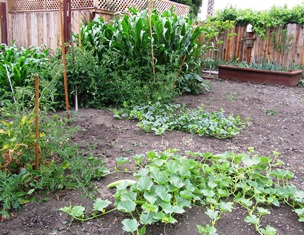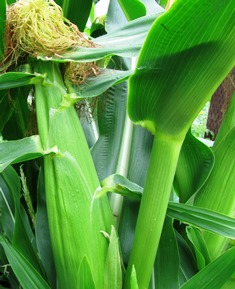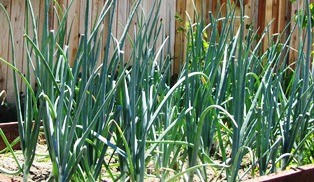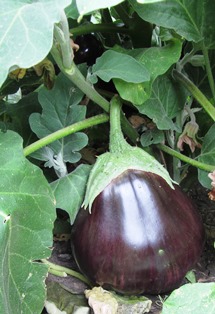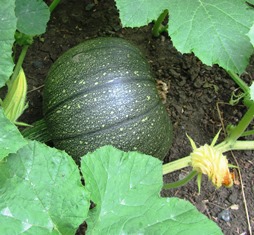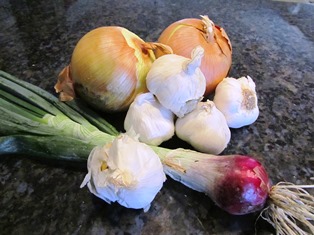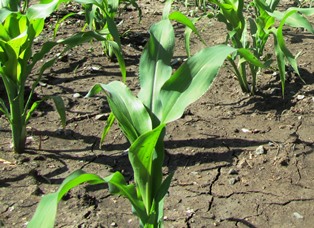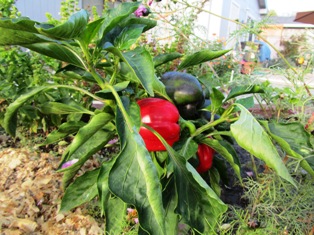Blog Archives
Stressed-out Tomatoes and Corn
This has been a tough season for my tomatoes because of the heat wave California (and the southwest) recently endured and the gophers that showed up early.
The heat topped out at 105 degrees Fahrenheit on my patio this week. The patio isn’t far from my garden where I have heirloom tomatoes and corn growing. There are cherry and grape tomatoes, slicing tomatoes, a tomatoes for paste. I’m also growing there and elsewhere on the property patches of corn, eggplant, pumpkins, summer squash, and other veggies.
Just when the second planting of corn in my garden had reached the fragile pollination stage, the heat wave hit. Such extreme summer heat stresses corn. In just one week, despite all the watering, an entire section of the corn dried, the moisture of the ears diminished, and some of the dried tassels blew away in the hot wind.
I’m worried that with the global warming problem, we Northern Californians who have always enjoyed the Mediterranean climate here will be experiencing more of this intense heat in coming years.
Wildfire and Record Heat Mark July’s Start
My corn is drooping, the ears are shriveling, the lush green leaves are beginning to look like oven-roasted kale chips. No question that the early summer heat is taking a toll on my garden.
July is usually a hot month. But here on the farmette this first week of July, temperatures over the last few days have reached 104 degrees Fahrenheit. Five minutes away up on the ridges of Clayton, I have been watering my daughter’s garden, too. Yesterday, over the top of a towering bone-dry hill opposite her house, I caught sight of smoke and local cattle moving down off the hills toward the neighborhood homes.
That grass fire, roughly two miles away from her home, mushroomed into a cloud of smoke. The main artery over those hills, Kirker Pass Road, was closed while firefighters fought the blaze yesterday afternoon. The fire was near the Concord Navel Weapons Station. The winds blow off the Carquinez Strait up through the East Bay valleys in late afternoon each day, and yesterday was no exception. Wind increases the risk that the fire can spread.
As I watered the citrus, I saw helicopters (Cal Fire sent four planes) carrying water overhead to douse the fire. A helicopter passed over about every fifteen minutes. In just a few hours, the blaze charred 492 acres, burned a trio of structures, and threatened some homes. It’s worrisome to local homeowners that because of dwindling resources, Contra Costa County recently closed the fire department in Clayton, closest to that grass fire.
So, we all count ourselves fortunate that local fire fighters and their hard work over the next five hours resulted in a dousing of that fire.
Garden Tuck-ins and New Plantings
From our Henny Penny Farmette organic garden, I am already harvesting tomatoes, squash, eggplant, peppers, cantaloupe, and ears of corn. But just because I’m harvesting crops now doesn’t mean I’m finished planting for the year.
In fact, in late June and July, while I am enjoying the healthy summer bounty from our garden, I like to think about what else I might plant, like more corn as a succession planting, or tucking in something new where onions or lettuces have been pulled.
In Northern California, we have the dry season (hot weather) and rainy season (cool and wet). The weather is temperate and I have learned to plant vegetables according to when they grow best.
This is the perfect time to plant beans, corn, melons, parsnips, potatoes, pumpkins, radishes, rutabaga, and turnips.
Then as the months of the fall season approach, I plan to tuck in a few cool season crops (bok choy, cabbage, carrot, fava bean, lettuces, peas, radicchio, and spinach) and root vegetables such as turnips, leeks, and onions.
Seven Tips for Growing Sweet Corn
Nothing says “summer” like juicy ears of sweet corn. Corn (or maize, as it is called in much of the world) isn’t difficult to grow but following a few tips can ensure success in growing this amazing plant.
What would a summer backyard barbecue be without a platter piled high with corn on the cob? And what could be better than picking it fresh?
We planted corn last year and still had a few ears that the squirrels hadn’t found. When I discovered them a few weeks ago, I removed the dried husk and planted some of the seed. Amazingly, the seeds grew and are now over a foot tall.
If you want to grow corn, it is helpful to understand several points.
1. Corn seeds won’t germinate in soil colder than 50 degrees. So wait until the soil is warm to plant your seeds.
2. Wind is the pollinator for corn, so do not plant your seed corn in straight rows. Instead, plant the seeds in blocks. Corn is monoecious, meaning the male and female parts are on the same plant. Block planting enables better pollination.
3. Plant corn kernels (two or three seeds) 15 inches apart in rows 30 to 36 inches apart.
4. After planting the corn seeds, water well. Corn needs plenty of water and nutrient-rich soil high in nitrogen. Dig in some aged manure to help meet the corn’s nitrogen needs.
5. Fertilize plants when they have reach 12 to 15 inches in height.
6. Weed often, but take care not to damage the corn roots. Compost can help keep weeds at a minimum and also adds nitrogen to the soil.
7. To harvest corn, bend the ear downward and twist from the plant. Remove husk and silks before cooking or freezing.
A little known fact about sweet corn comes by way of horticultural specialist Jonathan R. Schultheis, University of North Carolina Extension, who notes that the first known variety of sweet corn, Papoon, was acquired from the Iroquois Indians in 1779. See, http://www.ces.ncsu.edu/hil/hil-13.html
Whether you call it sweet corn or maize or classify it as vegetable or grain–these terms won’t matter as much as the word, “delicious” when it comes time to serving your home-grown corn to family and friends.
Learning about GMO Food Safety
You might assume your zucchini and sweet corn is safe to eat but what if it was grown from GMO-treated seed, able to withstand an herbicide or even produce an insecticide as it grows? What happens in your gut when you eat that corn? What happens to animals fed such corn? These are questions that scientists, doctors, consumers, food safety advocates, and environmentalists all grapple with in their concern about GMO food safety.
The Non-GMO Project is a nonprofit organization concerned with GMOs and food safety. It explains on its Web site that a genetically modified organism (GMO) is a plant or animal that has been “genetically engineered with DNA from bacteria, viruses, or other plants and animals.” That means it is an anomaly in nature as such experimental combining of genes of different species does not occur in traditional crossbreeding or in nature (http://www.nongmoproject.org/learn-more).
Consumers might not be getting all the facts of what is known and what science is discovering about the health concerns of many Americans eating foods that contain GMOs. Estimates suggest that 80 percent of U.S. processed foods contain GMOs, meaning millions of Americans are eating foods that might not be all that safe to consume. Research into links between GMO consumption and ill health are ongoing but already GMO-altered foods, whether plants or animals, are raising health concerns.
Seed suppliers say that interest in non-GMO corn seed is growing among farmers because of lower costs, better animal health, and higher yields as well as increasing disenchantment with genetically modified traits of GMO seed (http://www.non-gmoreport.com/articles/january2013/Demand-growing-for-non-GMO-corn-seed.php)
With summer on the horizon, many people are planting seeds or seedlings in their gardens or are anticipating the plentiful vegetables available at produce stands and in supermarkets. But read the labels on all those mounds of squash, tomatoes, peppers, and potatoes.
Potatoes and tomatoes are considered low-risk for GMOs by the Non-GMO Project, that is, those two vegetables are not currently being genetically engineered. Although many people might think wheat is a concern, the Non-GMO Project states that wheat is not now nor ever has been genetically engineered, unlike soy, cotton, sugar beets, alfalfa, canola, zucchini, and summer squash.
More than 60 countries, including most of the developed nations, have banned or restricted GMOs. The United States is the exception, allowing production and sale of such products to continue. Consumers, scientists, and environmentalists opposed to genetic manipulation of plants and animals say avoidance and boycott of such products are consumer choices even as legal battles against bio-tech giants and anti-GMO advocates move through the courts.
As for summer corn, the best option might be to grow your own from heirloom seed that has not been genetically maniuplated. Otherwise, buy corn certified as non-GMO or from sources that support organic farmers and food sources such as Whole Foods and other organic markets. Check out the offerings for seed at Seeds Now (http://www.seedsnow.com/pages/shop-all-seeds).
 Facebook
Facebook Goodreads
Goodreads LinkedIn
LinkedIn Meera Lester
Meera Lester Twitter
Twitter





